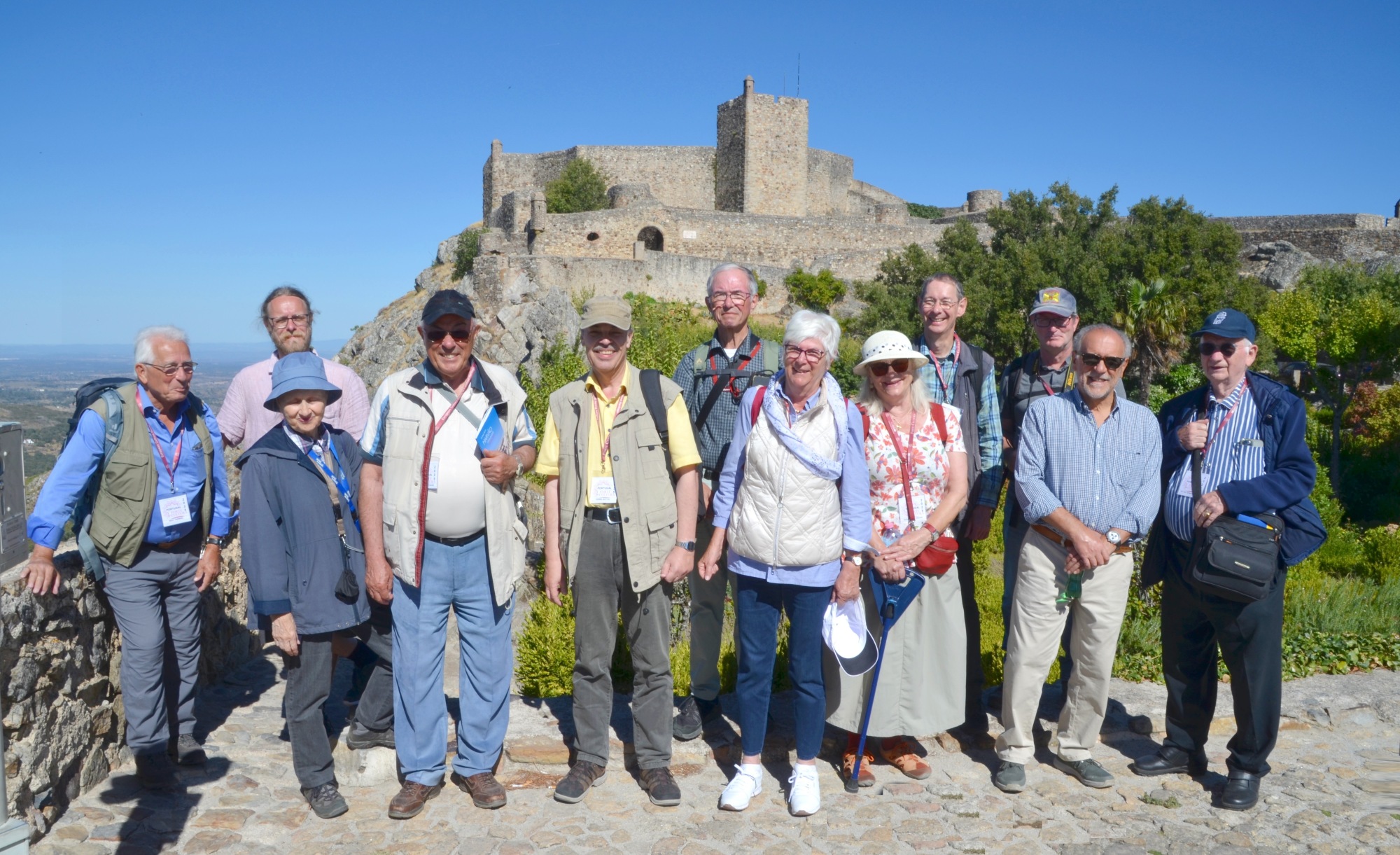Group photo of the tour participants in front of the bastioned castle in Marvão Photo: H.-R. Neumann, 25 September 2025
Military architecture is an important part of Portugal’s architectural and artistic heritage. Both medieval and modern fortifications can be found along the coast and in Portugal’s border regions. At 1,214 kilometres, the border between Spain and Portugal is the longest between any two countries in the European Union. The area around the border is called A Raia, or ‘the strip’, in Portuguese. Not least because of their former position as a world power, the Portuguese were always able to protect their colonies in foreign countries with coastal fortifications. In their own country in particular, strong coastal fortifications on the Atlantic Ocean protected them from the invasion of hostile maritime forces. Until the 20th century, a dense network of coastal batteries protected the capital Lisbon. The Torre de Belém fortress tower was a global model for securing Portuguese possessions. All the structures blend seamlessly into the built environment.
The study trip, led by Dr.-Ing. Hans-Rudolf Neumann and attended by international participants, took place from 20 to 28 September 2025. It first visited coastal fortifications in Lisbon and Peniche, with a detour to the defensive lines in Torres Vedras, before continuing with a full-day tour of the World Heritage Site of Elvas. The city also served as a starting point for visits to the three Raia fortresses and World Heritage candidates Marvão, Almeida and Valença do Minho. The return journey via Porto included further fortification visits in the coastal area. The entire tour was excellently organised by a local tour operator in Lisbon. The results of the trip will be recorded in a documentary.
Most of the visits were supported by high-calibre specialists and internationally renowned experts from the civil and military sectors. The fortifications visited are impressive not only because of their state of preservation, but also because of the efforts made to ensure their sustainable use. However, it was repeatedly regretted that better multilingual communication for tourists – especially in print – could improve identification. The Centro dos Estudos de Arquitectura Militar in Almeida (CEAMA) currently serves as a role model in this area.


Laisser un commentaire